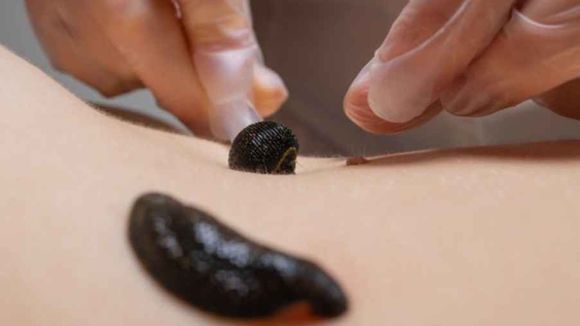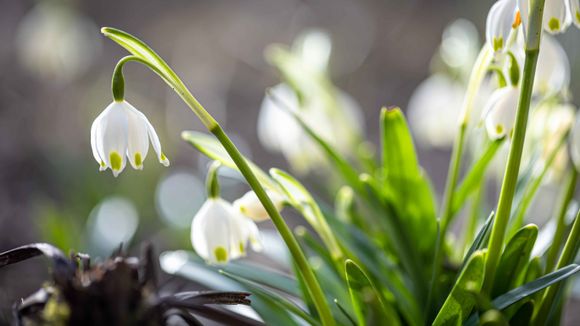Old Remedies That Still Heal Us Today
From opium in maca, to quinine extracted from a quinine tree, to active compounds in snowdrop, there are many old working natural remedies that have actually tested and proven medical benefits.
Artemisia annua
Artemisinin (Artemisia annua) and its semisynthetic derivatives are a group of drugs used in the treatment of malaria caused by Plasmodium falciparum. [ref. 1]
Tu Youyou discovered a substance called artemisinin, which can be used to treat malaria. Not only did Tu find a way to extract artemisinin from traditional Chinese medicine, but he also tested the new drug on himself to speed up development time.
Through a joint effort collectively referred to as "Project 523," Chinese scientists prepared dihydroartemisinin, artemether, and artesunate in the 1970s. It is these derivatives, along with others, including artemizone, arteter and artellinic acid, collectively known as "artemisinins", that are now making a decisive contribution to the management of malaria.
This breakthrough contributed to a successful treatment that saved millions of people in China, Southeast Asia, Africa and South America. [ref. 2]
Spurgia esulae (Euphorbia peplus)
The white juice of this common weed, also known as garden milkweed, is described in the book "Complete Herbalist" by Nicholas Culpepper (1826) as "a good treatment for warts". However, do not try this remedy at home, as it can irritate the skin.
Garden milkweed makes its way from native Europe to Australia, where biochemist Dr. Jim Aylward grows it in his garden. In 1997, Dr. Aylward isolated the plant's active ingredient, ingenol mebutate, which he discovered was toxic to rapidly reproducing human tissue.
And recent clinical trials of a gel derived from milkweed juice suggest that it is effective in stopping lesions turning into skin cancer. The study in question involved 36 patients with non-melanoma skin cancer lesions. Each was treated with the juice of the Euphorbia peplus plant, which was applied to the skin once a day for three days. The juice of the plant has been used for centuries as a traditional medicine, and researchers include it at various stages in an appropriate clinical trial.
After one month, 41 of the 48 cancers showed a complete clinical response to treatment, which means that no trace of the tumor could be found at the clinical examination. Patients who received only a partial response from the first round of treatment were then offered a second course.
Lesions that responded positively to one or two courses of treatment were then followed further between two and 31 months. After an average of 15 months of treatment, two-thirds (68.5% or 30 out of 48) of skin cancer lesions still showed a complete response. [ref. 3]
Leeches (Hirudinea)

Yes, you may not have expected to see this here, but there's a reason. Leeches were one of the more civilized methods of bloodletting, a popular cure for diseases in bygone times. "Hirudotherapy" is the name of the treatment itself with medical leeches. In general, hirudotherapy prevents the formation of thrombi and is considered an effective remedy for varicose veins disease, thrombophlebitis, hemorrhoids and others.
For the ancient Greek physician Hippocrates, any imbalance in the four bodily dimensions (blood, black bile, yellow bile, and phlegm) would have caused disease. And the best way to correct this is by draining the excess - often blood.
Returning to the present, the use of medical leeches to treat multiple diseases has peaked, with France importing around 40 million each year. It is also interesting that recent advances in surgery include the use of leeches again. Hospitals such as UCLH in London use these bloodthirsty animals to drain excess blood after microsurgery, which helps promote natural healing. They can also be used in postoperative care for skin grafts or after reattachment of lost fingers and ears.
One of the mechanisms by which leeches are beneficial is that they produce a protein that stops blood clotting. They work by sinking into the reflexogenic (acupuncture) zones and releasing their biologically active substances, which number over 50!
White willow (Salix alba)
Both the ancient Egyptians and Hippocrates recommended using willow bark to relieve pain. Its effectiveness was eventually proven in a Royal Society study in 1763, but it wasn't until 1915 that pharmaceutical giant Bayer began selling it over-the-counter as aspirin. In fact, acetylsalicylic acid is the valuable chemical derived from salicylic acid extracted from the bark of white willow.
This tree is now the subject of between 700 and 1,000 clinical trials each year. And recent advances have shown that it has other beneficial effects besides a pain-relieving effect.
From reducing the risk of strokes to indications that it can help prevent cancer, aspirin is the traditional remedy that comes from the bark of white willow. [ref. 4]
Snowdrops (Galanthus)

Thus, the favorite spring flowers - snowdrops (Galanthus spp., Family Amaryllidaceae), are besides beautiful and supposedly beneficial to health. Their biological activities have been described in more than one study, with scientists pointing to the anticholinesterase, antimicrobial, antioxidant and anticancer potential of Galanthus spp. The main pharmacological ingredients in snowdrops, especially in bulbs, are galantamine and lycorin. [ref. 5]








